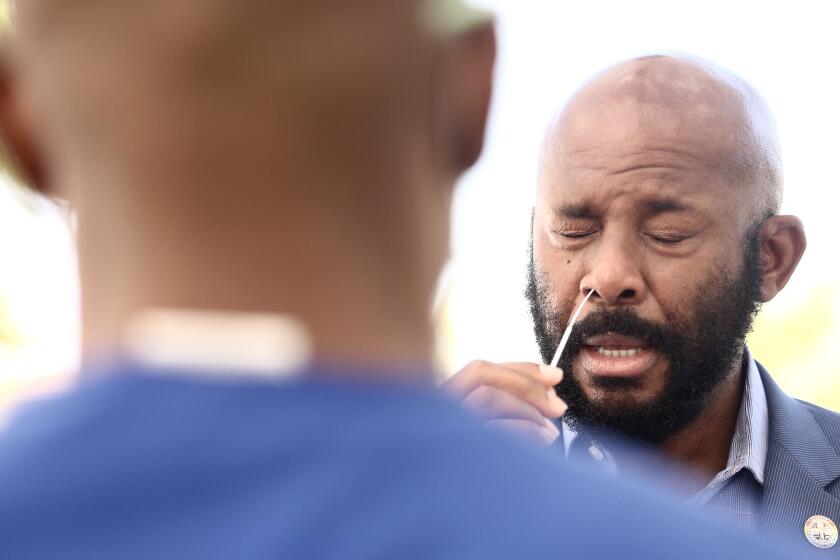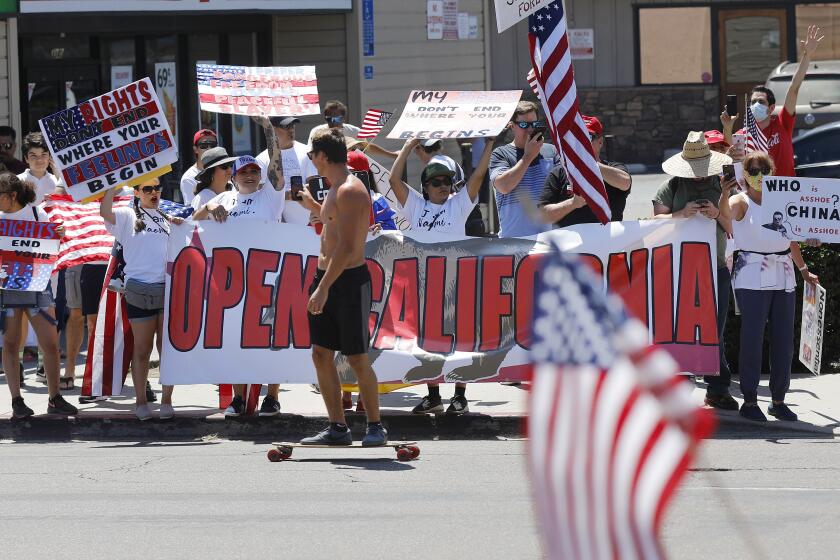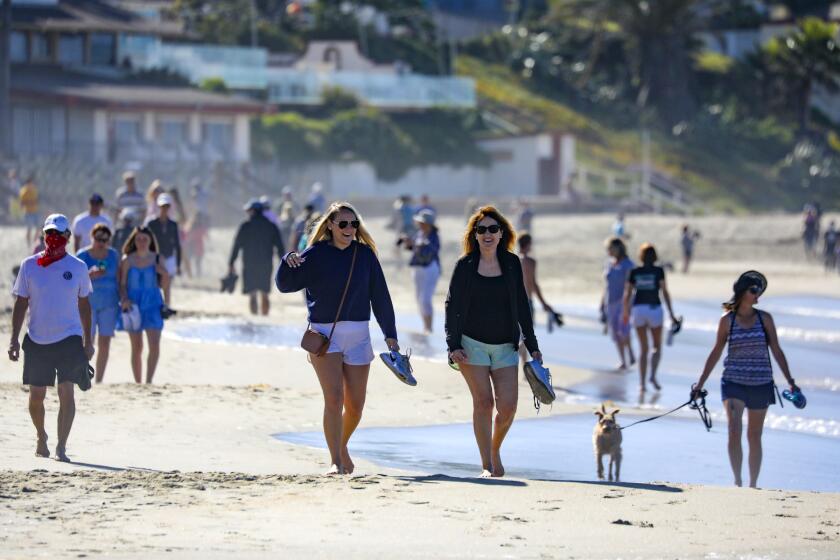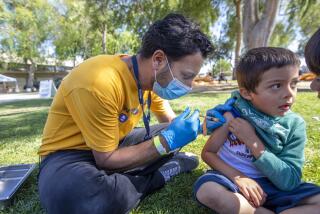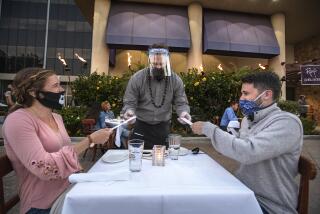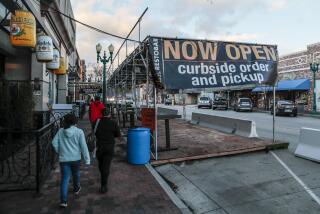Coronavirus-related death toll passes 2,000 in California, more than half in L.A. County
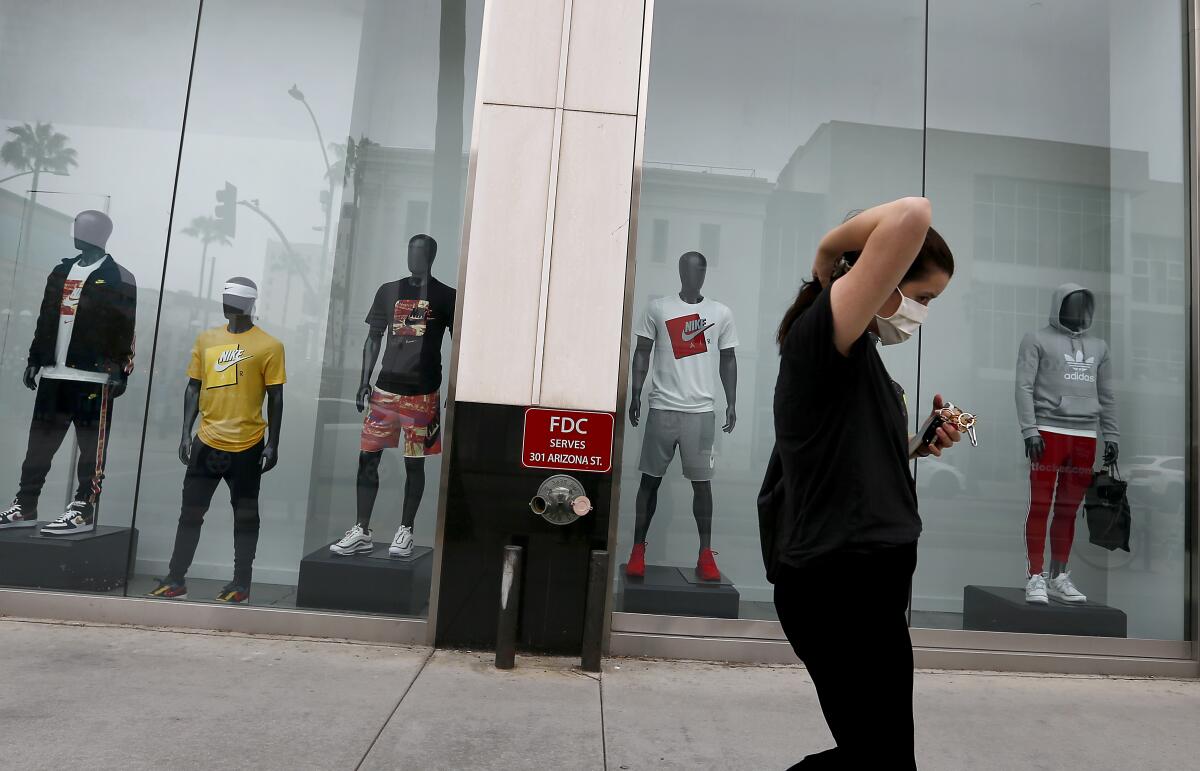
- Share via
Los Angeles County health officials announced 55 new coronavirus-related fatalities Thursday, pushing the pandemic’s statewide death toll past 2,000.
California’s largest county accounts for more than 1,100 of those victims, public health officials said.
“Many in our county are mourning the loss of their loved ones, and our community is very much with all of you and you are in our thoughts and our prayers every single day,” county Public Health Department Director Barbara Ferrer said Thursday.
The recent surge in the number of cases and deaths linked to the coronavirus pushed California across another sobering milestone, as the state surpassed 50,000 infections by the end of Thursday.
Los Angeles County, which continues to be a hotbed of the coronavirus even as other parts of the state have seen signs that the illness is retreating, confirmed 733 new cases Thursday — boosting the confirmed infection count past 23,000, Ferrer said.
The previous day, Ferrer announced 1,541 new cases, the largest increase reported in a single day since the pandemic began.
The county accounts for nearly half of California’s coronavirus cases. Only three other counties — Riverside, San Diego and Santa Clara — have recorded more than 100 fatalities.
Los Angeles County’s sharp uptick in new cases is mostly attributable to expanded testing, which health officials say is essential in getting a better sense of how many people have the virus. That data, in turn, could be used to ease California’s stay-at-home rules.
Los Angeles Mayor Eric Garcetti announced Wednesday that all county residents could now get free coronavirus testing at city-run sites. Previously, only residents with symptoms, essential workers or those in institutional settings such as nursing homes could be tested.
The county, though, didn’t go quite that far. Instead, officials announced they would continue to prioritize testing for people with symptoms of COVID-19, including newly recognized ones such as sore throat and sudden loss of taste or smell. Only certain individuals can get tested if they don’t have symptoms — such as those who are essential workers, over the age of 65, have a chronic underlying health condition or live in institutional living facilities, such as nursing homes.
However, those criteria apply only at county-operated or coordinated sites, meaning county residents who don’t meet eligibility requirements can still sign up to be tested at a city-run center.
The city and county use the same portal to book COVID-19 testing appointments, and that system “is able to distinguish” between those who would need to go to a city center compared with a county one, said Dr. Christina Ghaly, the county’s health services director.
It’s slowly getting easier to obtain a coronavirus test in California — following an initial rollout marked by restrictions and shortages.
Asked whether the county and city were sending mixed messages on testing, Ghaly said the two entities were working closely on a “rapidly evolving topic.”
“We think that this is the best approach moving forward,” she said. “We also believe that this is what is most supported in terms of the clinical evidence about who would benefit from a test.”
She said that the “testing supply chain and capacity is still limited across the country,” and that eventually, when the supply is no longer constrained and stay-at-home orders begin to be relaxed, the county could move to expand its criteria for those who should be tested.
She also cautioned that testing is not a panacea, and regardless of whether residents have been tested, they still need to follow health orders and stay at home as much as possible, keep their distance from others and wear cloth face coverings when outside their homes.
“I understand that testing can provide individuals with a sense of security and can make people feel more comfortable ... but I want to caution everyone on holding on too tightly to that security because, medically, it is fleeting,” she said. “A negative test one day does not mean you won’t get infected the next.”
For his part, Garcetti said he consulted with county public health department leaders and received positive feedback on the testing plan. But he said his announcement wasn’t something that county officials had to sign off on.
Garcetti stressed that front-line workers, people with COVID-19 symptoms and other high-risk individuals remain the priority for testing. But he said Los Angeles now has the capacity to test 18,000 people per day and supply is no issue. Saving lives starts with knowing where the virus is located, he said.
“This is a silent killer,” he said. “We know asymptomatic people spread this. I’m never going to let tests go to waste.”
Although state- and county-level officials have expressed optimism that California is headed in the right direction, the continued growth in the number of cases and deaths shows the state isn’t out of the woods.
Even so, some counties are pushing for Gov. Gavin Newsom to allow them to ease stay-at-home restrictions.
More pressure is likely to be placed on Gov. Gavin Newsom to offer a clearer timeline to reopening California amid the coronavirus outbreak.
That’s particularly true in less crowded, more remote areas where COVID-19 activity has been scant.
Modoc County, one of four California counties that have not reported a single case of coronavirus infection, plans to allow all businesses, schools and churches to reopen starting Friday, as long as people stay six feet apart, according to a statement signed by county officials.
It’s unclear whether that would lead to a legal showdown between the county and Newsom, whose statewide stay-at-home order supersedes local laws.
Other counties and cities have already started allowing select activities to resume, or reopening outdoor and recreational spaces that were shuttered to stem the spread of the coronavirus.
Newsom cautioned that moving too quickly could have disastrous consequences — citing other locations that saw a rebound in the virus after restrictions were relaxed.
“Look what happened in Japan. Look what happened in Singapore. Looked what happened in China,” he said Thursday. “When you pull back too quickly, you put people’s lives at risk. People are literally dying.”
A major flashpoint this week has been beaches. During the weekend heat wave, thousands flocked to the coastline in Orange County, which, unlike Los Angeles County’s, was open to the public.
Although there’s dispute over whether beachgoers were abiding by social distancing guidelines — officials in Orange County and elsewhere insist visitors were acting responsibly — images over the weekend drew a rebuke from Newsom, who a source said was considering ordering the closure of all California beaches.
Local leaders say Gov. Gavin Newsom’s directive to temporarily close all beaches in Orange County is government overreach.
On Thursday, though, Newsom announced a more limited directive. He said all state and local beaches in Orange County must temporarily close.
He cited “specific issues on some of those beaches [that] have raised alarm bells — people that are congregating there that weren’t practicing physical distancing, that may go back to their community outside of Orange County and may not even know they contracted the disease and put other people at risk, put our hospital system at risk.”
In many of the state’s coastal areas, Newsom said, “we saw people doing all the right things.”
“In areas where we didn’t see that, you have to acknowledge that,” he said. “You have to own that, and you have to figure that out.”
Huntington Beach Mayor Lyn Semeta said she was concerned and disappointed with Newsom’s actions.
“The City has put careful thought and invested considerable effort and expense in order to discourage overcrowding and facilitate effective social distancing at our beaches,” she said in a statement. “In fact, we’ve taken Governor Newsom’s words to heart in Huntington Beach, to provide public access — in a safe way — so that our residents can experience physical and mental health benefits from accessing the Pacific Ocean. Our experience here locally has been that most people are being responsible and complying with social distancing, and given that Orange County has among the lowest per-capita COVID-19 death rates in California, the state’s action today seems to prioritize politics over data.”
Newsom expressed confidence that this “temporary pause” in Orange County could be lifted “very, very quickly, but we’ve got to make sure we get this right.”
“Why undo all the great progress?” he said. “Let’s move this state forward together.”
Garcetti said he supported Newsom’s decision.
“This virus affects all of us. It cares not what a county border is,” he said. “We don’t know the impact of moves for two to three weeks. So if we do things ahead of everybody else, we may not just be endangering our people but endangering other folks who drive in from neighboring counties.”
As far as L.A. County is concerned, “we, too, will be looking to relax and figure out how we can once again safely enjoy our beaches,” Ferrer said. “We’re not there today.”
Times staff writers Melanie Mason, Rosanna Xia, John Myers and Rong-Gong Lin II contributed to this report.
More to Read
Sign up for Essential California
The most important California stories and recommendations in your inbox every morning.
You may occasionally receive promotional content from the Los Angeles Times.
